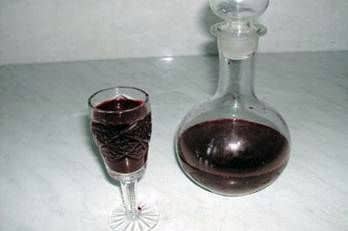
This delicious drink is prepared in a keg. Pick up the mature and clean cherries and fill them with a barrel, leaving unfilled at the top 15-20 cm. In the barrel of cherries pour honey.
Honey must be poured slowly, so that all the space between the cherries was filled. Then the barrel is carefully closed and put in the cellar for 3 months, during which time there is fermentation. It should be taken into account that if the barrel is not stable, without metal hoops, it is very often broken.
After 3 months. Vishnevku filter through a “waffle” towel and pour into bottles that clog. Cooking can be stored for several years. 12 kg of cherries need 4 kg of honey.
Зимовка маток. Когда снимать ловушки.
Recipes of drinks with honey